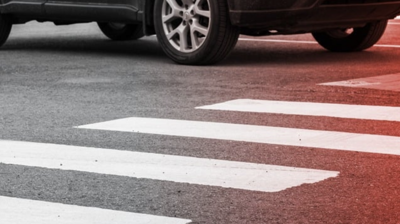When it comes to determining fault in a car accident, the key is finding out who had the right of way at the time of the crash.
In the case of merging accidents, also known as lane change accidents, this can be complicated. In this blog post, we’ll explain some of the basics of fault and merging accidents.
If you have been involved in a merging accident and have a specific question, the personal injury law firm of Niemeyer, Grebel, and Kruse can help. We offer free consultations and can help you navigate the legal process. Call us today at (314) 350-1900.
What is a merging collision?
A merging collision occurs when one or more vehicles change lanes and collide into another vehicle.
These accidents can happen in various ways, such as when a vehicle merges from an on-ramp onto a highway or when a driver changes lanes without checking their blind spot. Merging accidents can result in severe injuries, especially if one vehicle hits the other at high speed.
Common causes of merging and lane change car accidents
Merging accidents can occur due to various reasons, including:
- Failure to check blind spots: Drivers must check their blind spots before merging or changing lanes to avoid colliding with other vehicles.
- Speeding: Speeding reduces the time available for drivers to react, making it difficult to avoid accidents.
- Aggressive or distracted driving: Drivers who are driving aggressively or are distracted are more likely to cause accidents.
- Improper lane changes: Drivers must signal before changing lanes and ensure that there is enough space to merge safely.
How Missouri Law Defines Fault in a Car Accident
Missouri follows a comparative fault system, which means that fault is assigned based on the percentage of negligence of each party involved in the accident. Missouri law allows accident victims to recover damages even if they are partially at fault for the accident. However, their recovery may be reduced based on their percentage of fault.
In other words, this means that if a driver is found to be 30% at fault for a car crash, their recovery will be reduced by 30%.
Who is at Fault in a Merging Accident?
Determining fault in a merging accident can be challenging, as it often involves multiple factors. In some cases, both drivers may be at fault for the accident.
Generally speaking, when drivers are entering a highway from an on-ramp or side street, they must yield to any traffic already on the highway. This means that if one driver was merging onto a road and another driver crashed into them, the merging driver would be at fault.
On the other hand, if two vehicles are merging onto a highway at the same time and they crash into one another, who is at fault will depend on who had the right of way at the time. Usually, it is the first driver to begin to merge who has the right of way.
Other factors, such as failure to yield, lane change violations, speeding and distracted or impaired driving can factor into a driver’s level of fault.
Get legal help today
If you have been involved in a merging accident, it is crucial to seek legal representation as soon as possible. NGK Law can help. Our experienced attorneys have helped many clients recover damages for their injuries.
Contact us today at (314) 350-1900 to schedule your free consultation.






